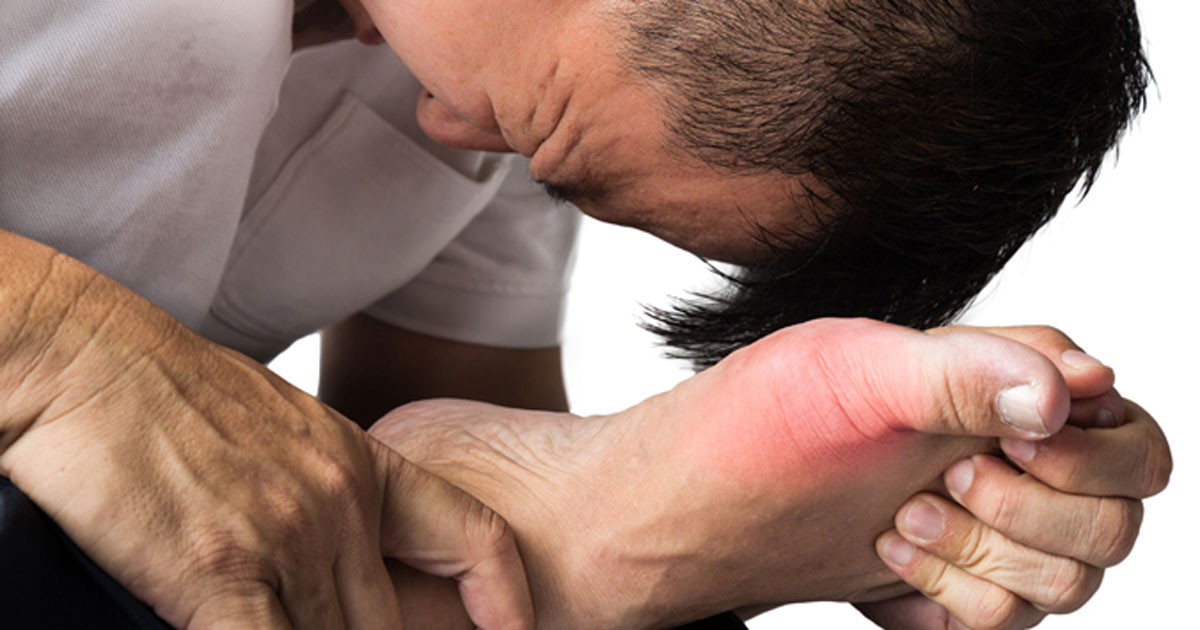EULAR: Gout Diagnosis Should Not Depend on Hyperuricemia Alone

Physicians should refrain from diagnosing gout based solely on hyperuricemia, according to updated EULAR recommendations published in the Annals of the Rheumatic Diseases.
“Despite effective treatments, gout is still often misdiagnosed and its management remains suboptimal,” Pascal Richette, MD, PhD, AP-HP, of Hopital Lariboisiere Centre Viggo Petersen in Paris, and colleagues wrote. “This may explain why the premature mortality among patients with gout remains unimproved over the last decade.”
“In 2006, the EULAR produced its first evidence-based recommendations for the diagnosis of gout,” they added. “The 2006 task force agreed that detection of [monosodium urate (MSU)] crystals in synovial fluid (SF) was the gold standard for the diagnosis of gout. Since then, a number of studies have explored the diagnostic value of clinical algorithms and of imaging modalities such as ultrasound (US) or dual-energy CT (DECT). This prompted a revision of the 2006 recommendations following an updated systematic literature review and a Delphi process to achieve consensus.”

To update the 2006 EULAR recommendations for gout diagnosis, Richette and colleagues formed a task force with participants from 12 European countries, including 15 rheumatologists, one musculoskeletal radiologist, two general practitioners, one research fellow, two patients and three experts in epidemiology and methodology. Members of the task force performed a systematic literature review of articles published since Jan. 1, 2005, up to July 2018, which uncovered 1,173 records, of which 83 were included in their analysis.
The task force used a Delphi consensus approach, in which members attended a 2-day meeting where the results of the literature review were presented and debated. The members then drafted a preliminary set of new recommendations. After four Delphi rounds, conducted through email, the task force reached a consensus on eight updated recommendations.
According to the task force, this update amends all previous EULAR recommendations for the diagnosis of gout. The final set of eight updated recommendations are:
- Physicians should search for crystals in synovial fluid or tophus aspirates in every patient with suspected gout, as monosodium urate crystals allow for a “definitive diagnosis of gout;”
- Physicians should consider gout in the diagnosis of any adult patient with acute arthritis. In addition, whenever synovial fluid analysis is not available, a diagnosis of gout can be made via monoarticular involvement of a foot or ankle joint, previous similar acute arthritis episodes, rapid onset of severe pain and swelling that is at its worst within the first 24 hours, erythema, male gender and associated cardiovascular diseases and hyperuricemia;
- Synovial fluid aspiration and evaluation for crystals should be performed in any patient with undiagnosed inflammatory arthritis.
- The diagnosis of gout should not be made based solely the presence of hyperuricemia;
- When the diagnosis is uncertain, and crystal identification is not possible, patients should be examined through imaging to search for monosodium urate crystal deposits and signs of any other diagnosis;
- Although plain radiographs are indicated to search for evidence of monosodium crystal deposits, they have limited value for diagnosing a gout flare. Ultrasound can be more helpful in diagnosing patients with suspected gout flare or chronic gouty arthritis;
- Physicians should search for risk factors for chronic hyperuricemia in every patient with gout, specifically chronic kidney disease, being overweight and consumption of excess alcohol, as well consuming nondiet sodas, meat and shellfish; and
- Physicians should perform systematic evaluations for associated comorbidities in patients with gout, including obesity, renal impairment, hypertension, ischemic heart disease, heart failure, diabetes and dyslipidemia.
“The task force recommends a three-step approach for the diagnosis of gout,” Richette and colleagues wrote. “The first step relies on MSU crystal identification when SF analysis is feasible. If not possible, the second step relies on a clinical diagnosis based on suggestive and associated clinical features of gout and presence of hyperuricemia. When a clinical diagnosis of gout is uncertain and crystal identification is not possible, the third step recommends imaging, particularly US, to search for imaging evidence of MSU crystal deposition.” – by Jason Laday
Disclosures: Richette reports honoraria from Astra-Zeneca, Grünenthal , Ipsen/Menarini and Savient. Please see the full study for additional authors’ disclosures.


